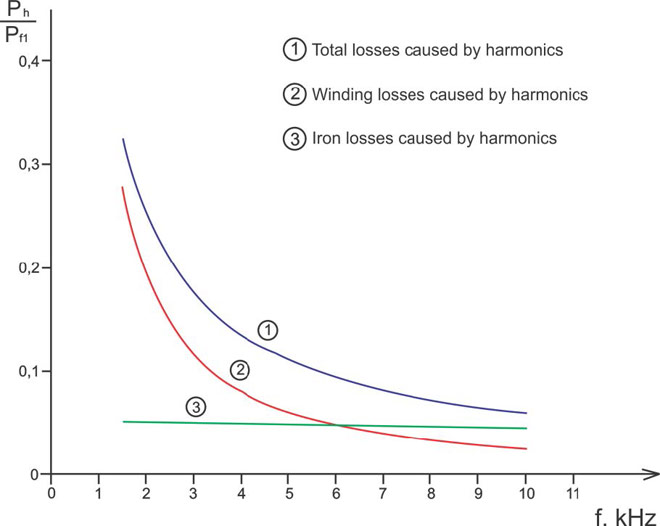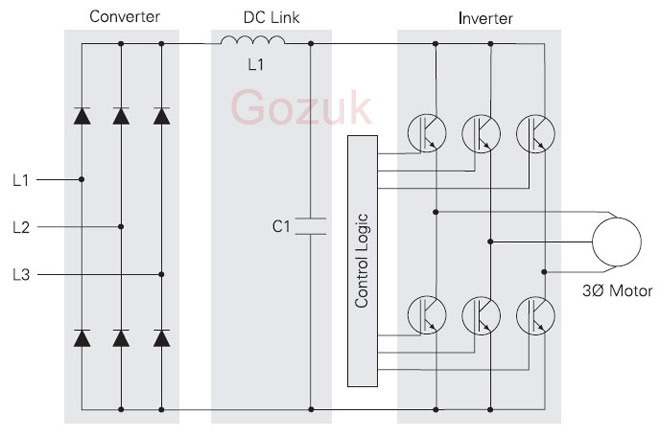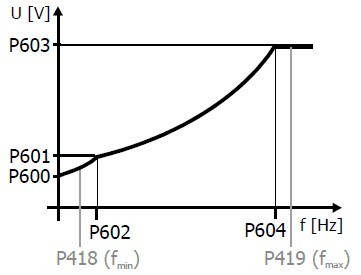VFD Braking Resistor
Braking resistor is one types of RXHG resistors, it's been used in controlling motor brake in variable frequency drives mechanism, to convert the regenerated electric energy into thermal energy during braking process of the electric motors.
Braking resistor functions
1. Protect VFDs
Due to inertia effect, it will produce lots regenerative electric energy in the motor's fast braking process. It will affect the DC control part of VFDs if those electric energy can't be consumed in time, it leads to fault of VFDs, even worse, the VFDs would be broken. Thanks to the brake resistor solves this problem well enough to protect electric motors away from regenerative energy damage.
2. Protect power supply lines
The brake resistor converts regenerated electric energy into thermal energy and absorbs it during braking process, so it won't feed back to the power supply lines and harm it, therefore to protect power supply in stable running state.
Resistance ohms selection
Besides the maximum current of the VFD dedicated brake unit, there is no clear corresponding relationship with the brake resistor selection, the resistance value is chose according to brake torque primarily, and the power is chose through resistance value and utilization rate. But there is a principle that can't be violated: ensure the current flow "Ic" on brake resistor must less than the allowed maximum current of the brake unit, that is R > 800/Ic, 800 means the maximum DC voltage of VFD's dc control part, Ic means the maximum current of the brake unit.
Brake resistor power calculation
Now we should confirm the resistor power after the resistance value finalized. It's a little complicate to select the resistor power as it relates to lots of factors. The brake resistor's instantaneous power formula: P = 7002/R, the power calculated by this formula is brake resistor worked in continuous working status, but the braking resistor is in intermittent working status normally, so it's a big waste. In fact, we can select the power by its actual utilization rate Ur%, therefore, the formula is Pr = 7002/RxUr%. In practical application, the resistor power can be calculated by above formula, on the other side, the brake resistor utilization rate can be calculated according to the resistance value and power, to make sure proper selection and avoid overheat of the brake resistor.
Brake resistor utilization rate
The low utilization rate, the low temperature it generates, the less electric energy consumed on the brake resistor, the poor effect in braking, and the capacity of the brake resistor can take full advantages. In theory, when the resistor utilization rate is 100%, the resistance capacity utilization is the best and braking effect is most notable, but it needs high resistance power. It's better to select low resistor under brake unit maximum current for heavy inertia load in low braking speed, and choose bigger brake resistors for rapid braking loads.
Braking resistor functions
1. Protect VFDs
Due to inertia effect, it will produce lots regenerative electric energy in the motor's fast braking process. It will affect the DC control part of VFDs if those electric energy can't be consumed in time, it leads to fault of VFDs, even worse, the VFDs would be broken. Thanks to the brake resistor solves this problem well enough to protect electric motors away from regenerative energy damage.
2. Protect power supply lines
The brake resistor converts regenerated electric energy into thermal energy and absorbs it during braking process, so it won't feed back to the power supply lines and harm it, therefore to protect power supply in stable running state.
Resistance ohms selection
Besides the maximum current of the VFD dedicated brake unit, there is no clear corresponding relationship with the brake resistor selection, the resistance value is chose according to brake torque primarily, and the power is chose through resistance value and utilization rate. But there is a principle that can't be violated: ensure the current flow "Ic" on brake resistor must less than the allowed maximum current of the brake unit, that is R > 800/Ic, 800 means the maximum DC voltage of VFD's dc control part, Ic means the maximum current of the brake unit.
Brake resistor power calculation
Now we should confirm the resistor power after the resistance value finalized. It's a little complicate to select the resistor power as it relates to lots of factors. The brake resistor's instantaneous power formula: P = 7002/R, the power calculated by this formula is brake resistor worked in continuous working status, but the braking resistor is in intermittent working status normally, so it's a big waste. In fact, we can select the power by its actual utilization rate Ur%, therefore, the formula is Pr = 7002/RxUr%. In practical application, the resistor power can be calculated by above formula, on the other side, the brake resistor utilization rate can be calculated according to the resistance value and power, to make sure proper selection and avoid overheat of the brake resistor.
Brake resistor utilization rate
The low utilization rate, the low temperature it generates, the less electric energy consumed on the brake resistor, the poor effect in braking, and the capacity of the brake resistor can take full advantages. In theory, when the resistor utilization rate is 100%, the resistance capacity utilization is the best and braking effect is most notable, but it needs high resistance power. It's better to select low resistor under brake unit maximum current for heavy inertia load in low braking speed, and choose bigger brake resistors for rapid braking loads.
Post a Comment:
You may also like:
Featured Articles
Variable frequency drive Rectifier
 To understand variable frequency drive (VFD) better, it's necessary to explain some of the main parts of the variable frequency ...
To understand variable frequency drive (VFD) better, it's necessary to explain some of the main parts of the variable frequency ...
 To understand variable frequency drive (VFD) better, it's necessary to explain some of the main parts of the variable frequency ...
To understand variable frequency drive (VFD) better, it's necessary to explain some of the main parts of the variable frequency ...VFD controlled Induction motor ...
 This paper presents a procedure to measure the efficiency on an induction motor fed by a VFD by the all operation range to speed ...
This paper presents a procedure to measure the efficiency on an induction motor fed by a VFD by the all operation range to speed ...
 This paper presents a procedure to measure the efficiency on an induction motor fed by a VFD by the all operation range to speed ...
This paper presents a procedure to measure the efficiency on an induction motor fed by a VFD by the all operation range to speed ...VFD: Pulse Width Modulation (PWM)
 Pulse Width Modulation (PWM) VFDs provide a more sinusoidal current output to control frequency and voltage supplied to an AC ...
Pulse Width Modulation (PWM) VFDs provide a more sinusoidal current output to control frequency and voltage supplied to an AC ...
 Pulse Width Modulation (PWM) VFDs provide a more sinusoidal current output to control frequency and voltage supplied to an AC ...
Pulse Width Modulation (PWM) VFDs provide a more sinusoidal current output to control frequency and voltage supplied to an AC ...Variable frequency drive Advantages & ...
VFDs are good for variable speed, in a water pump this is used to maintain a steady pressure, they will smooth out variances in ...
Variable frequency drive Energy saving
 Energy can be saved in a VFD by reducing the losses in the electric motor or by reducing the energy consumption of the variable ...
Energy can be saved in a VFD by reducing the losses in the electric motor or by reducing the energy consumption of the variable ...
 Energy can be saved in a VFD by reducing the losses in the electric motor or by reducing the energy consumption of the variable ...
Energy can be saved in a VFD by reducing the losses in the electric motor or by reducing the energy consumption of the variable ...
VFD manufacturers
